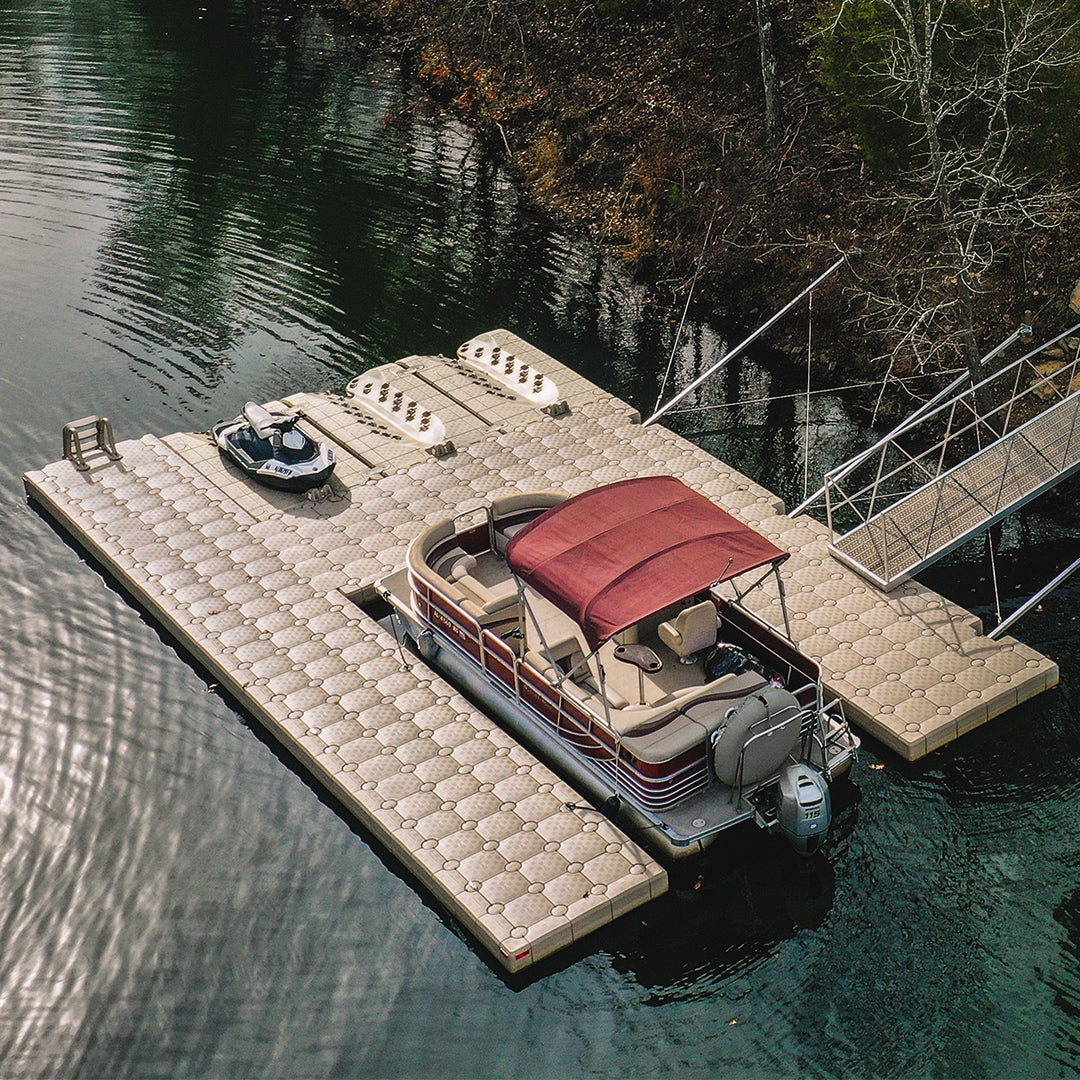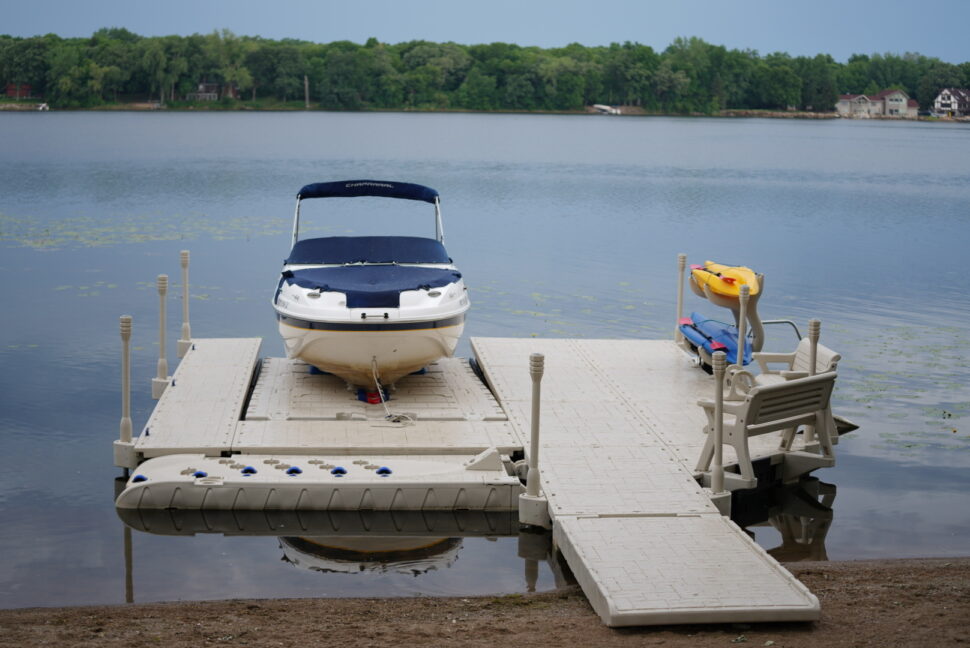Upgrade Your Waterside With Durable Floating Docks
Upgrading your waterfront with resilient floating docks can considerably improve both performance and aesthetics, offering a versatile option for numerous water tasks. These frameworks are made to adapt to rising and falling water degrees, making certain security and accessibility throughout the periods. With a series of materials readily available, including low-maintenance choices and standard timber, picking the ideal dock can match your personal design and satisfy sensible needs. Comprehending the subtleties of installation and upkeep is critical for guaranteeing long life and efficiency. What aspects should you consider when making this financial investment?
Benefits of Floating Docks
Floating docks offer a plethora of advantages that boost their charm for numerous maritime applications. Unlike typical set docks, floating docks rise and loss with the tide, making certain regular ease of access for watercrafts and boat regardless of environmental conditions.
In addition, floating docks are simpler to set up and move, giving flexibility for temporary or seasonal use. Their modular design enables personalization to fit particular demands, whether for private marinas, property waterfronts, or industrial applications.
Furthermore, floating docks develop minimal disruption to the marine environment, maintaining local environments and decreasing the chance of erosion. They also offer improved security and security for customers, as their resilient nature supplies a much more flexible surface area than inflexible structures.
In addition, floating docks can facilitate a diverse series of activities, such as fishing, swimming, and entertainment boating, making them an important asset for waterfront growth. Their flexibility and usefulness make floating docks a recommended choice for a variety of marine jobs.
Selecting the Right Materials
Choosing appropriate materials for floating docks is important to their longevity, efficiency, and general efficiency. When choosing materials, take into consideration elements such as environmental direct exposure, maintenance needs, and architectural integrity. Usual products include timber, plastic, aluminum, and composite options, each offering unique benefits and drawbacks.
Wood, while visually pleasing, needs normal upkeep to avoid rot and degeneration. Pressure-treated timber can boost durability, yet it might still succumb to water damages over time. Plastic floats, typically made from high-density polyethylene, are resistant to rust and need minimal upkeep, making them an attractive selection for low-maintenance applications.
Aluminum is one more practical choice, known for its strength and light-weight buildings. It is immune to rust and can endure extreme weather, although it might be extra expensive than various other materials. Composite materials incorporate the very best characteristics of wood and plastic, offering a low-maintenance and resilient option that resembles the appearance of timber without the associated downsides.
Eventually, the option of material need to align with the intended usage, ecological considerations, and budget restraints, guaranteeing a useful and sturdy floating dock that satisfies your particular demands.
Setup Refine Review
The successful setup of a floating dock depends on mindful planning and implementation, making certain that it runs efficiently in its intended environment. The very first step includes evaluating website problems, including water depth, shoreline attributes, and prevailing climate patterns, which will notify the dock style and anchoring system.
Complying with the site analysis, the following stage is to prepare the floating dock elements. This includes assembling the structure, securing floats, and connecting any kind of needed hardware. It is critical to make sure that all links are durable and waterproof to withstand marine problems.
As soon as the dock is assembled, the installation process starts with positioning the dock in the water. This can entail a crane or various other lifting equipment, particularly for bigger frameworks. Proper placement is crucial for capability and safety and security.

Maintenance Tips for Long Life
Regular upkeep is important for making sure the long life and optimum performance of a drifting dock. To attain this, begin with regular examinations a more info here minimum of twice a year, focusing on the stability of the dock's structure, including the flotation protection tools and linking hardware. Try to find indicators of wear, damages, or deterioration, and address any type of concerns immediately to prevent further wear and tear.
Cleansing is another important facet of maintenance. Get rid of particles, algae, read more and barnacles from the dock's surface to stop unsafe conditions and preserve visual allure. Use a light detergent and a soft brush to prevent harming the dock's products.
Furthermore, make sure that the dock is correctly secured and protected to hold up against seasonal adjustments in water degrees and weather condition conditions. Inspect the anchoring system for stability and make modifications as essential.
Enhancing Your Outside Visual
To create a visually enticing outdoor space, including a floating dock can substantially improve the general visual of your waterside building. Floating docks are not only practical but can likewise function as a striking centerpiece that enhances the natural environments - floating dock services. Available in various products and designs, these docks can be tailored to match your residential or commercial property's building design and landscape
The addition of decorative aspects, such as incorporated lighting or fashionable railings, better boosts the dock's aesthetic appeal. Take into consideration utilizing all-natural timber coatings, which mix effortlessly with the environment, or going with modern materials like aluminum or composite outdoor decking that offer a sleek, modern look.
Strategically placing planters or seating locations on or around the dock can produce welcoming rooms that urge leisure and pleasure of waterfront views. In addition, including shades and structures that harmonize with your landscape will produce a cohesive aesthetic throughout your exterior location.

Conclusion

Upgrading your waterside with durable floating docks can dramatically boost both functionality and aesthetic appeals, supplying a versatile solution for various water tasks. Unlike standard set docks, floating docks surge and loss with the tide, guaranteeing regular accessibility for watercrafts and watercraft regardless of environmental problems.Selecting ideal materials for floating docks is vital to their durability, efficiency, and total performance.As soon as the dock is constructed, the installation process starts with positioning the dock in the water.In summary, floating docks deal numerous advantages, including versatility to water level changes and a variety of material alternatives.